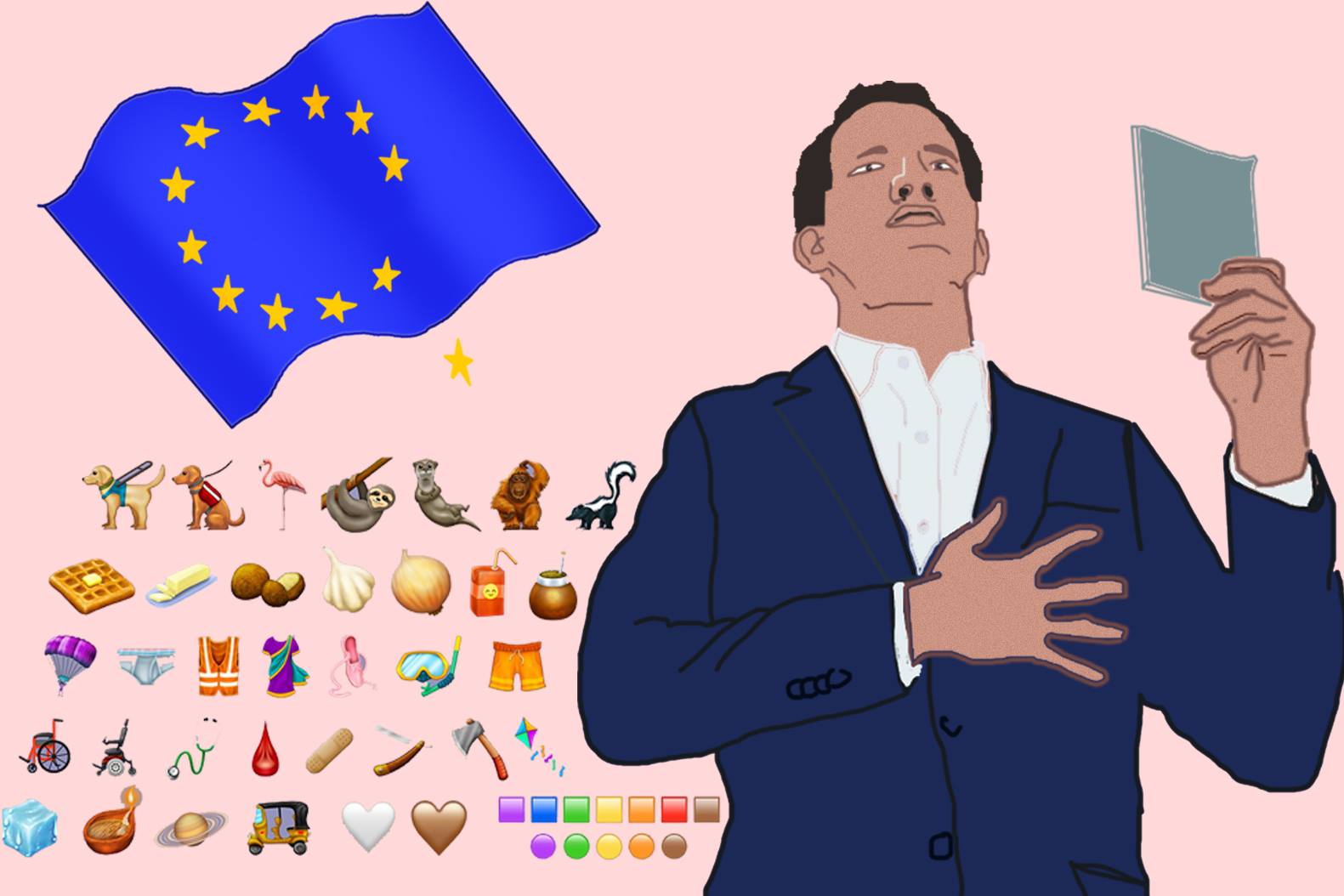Rosalía – Motomami – Camaleona
“¿Oye, ya has escuchado el nuevo disco de la Rosalía?” my mother asks, shifting gears. We’re driving home from the Bilbao airport, where I have just arrived for the Easter holidays. After months away, everything looks unfamiliar – the trees, the mountains, even the blue sky seems oddly off-colour. But my mother’s voice grounds me: “¿El Motomami ese?”
“Sí,” I reply.
“¿Y qué pensaste?”
I tell her I thought it was pretty good. Great, even. My mother nods – she thought I’d say that, and every music journalist she has come across seems to agree that Rosalía is innovative, a musical genius, a force to be reckoned with. But that might not be the Spanish layman’s opinion. In fact, she tells me, a lot of people hate Motomami.
“¿Y eso?” I ask, although I already know the reason. My mother rolls her eyes, pulling up next to our house.
“Pues porque a una mujer española no le puede ir bien fuera de España.”
We’ve had this conversation a million times. Rosalía has been a contentious figure in Spanish pop culture for a while, after all. Ever since her second album, the flamenco-pop fusion El mal querer, exploded worldwide, she has been the target of both raving praise and unadulterated hatred from all sides of the Spanish media. My mother blames this on misogyny, on the unspoken rule that a Spanish woman cannot – or should not – find success outside of Spain. But even in 2018, the Rosalía discourse was variopinto, diverse enough that even my nearly-retired, Elton John-obsessed mother took notice.
From the very start, conversations surrounding Rosalía ranged from the serious to the absurd. On the one hand, we have the meme-worthy incidents, like Rosalía ignoring (or just failing to notice) famed director Pedro Almodovar as he tried to get her attention during a concert. These tend to make the rounds online before vanishing into the vast ocean of iconically funny celebrity mishaps. Digging a little deeper, however, we find a strange, neurotic fear that mami is abandoning us. Take an easy example: the many rumours that Rosalía had broken her working relationships with Spanish designers like Palomo Spain or María Escoté. The Spanish media was outraged, accusing her of forgetting her roots. Was she ditching the motherland as soon as she could get Versace’s attention? Well, given how Palomo Spain designed the dress for the music video of her 2019 single ‘A Palé’ and upcoming Spanish designer Pepa Salazar took charge of much of her Motomami wardrobe… no, I think not.
It was my mother who introduced me to an even stranger example of the Rosalía hysteria, also while driving, as ‘Malamente’ played on my phone.
“¿Oye, pero ya has visto lo que ha hecho el alcalde de Fachadolid?”
Ah, yes. The Rosalía versus Óscar Puente debacle. I missed the height of the mediatic furore surrounding this bizarre exchange because, as so often happens, I was abroad at the time. But my mother summed it all up for me when I returned to Españita: one fine day, Valladolid mayor Oscar Puente opened Twitter to find a fellow vallisolterano asking why Rosalía would not be headlining a local, public festival. Puente replied, with all the indignation of a man very much wronged: “Pide 500,000 euros, me dirás tú.”
“¡¿Pero pa qué hace eso?!”
And I agree with my mother’s utter confusion: what Puente did was really, really strange. There’s no other way to put it. Why reply to that particular tweet? Why the part-outraged, part-dismissive “me dirás tú”? Why state the exact amount of money her representatives were asking for instead of just claiming it was too expensive and leaving it at that? And, by the way, it was too expensive, so much so that both Rosalía and other festival organisers explained that the number Puente cited was literally wrong. And yet many still came after her to the cry of ¿Pero tú quien te crees que eres? How dare you turn your back on your people? Ask for so much? Dare to do well? Who do you think you are?
Then again, I’m not about to spend my time defending a millionaire popstar. Puente’s data may be wrong, but there’s no denying that Rosalía is E de expensiva. I myself felt a short-lived kinship with Puente when I heard about the prices for her upcoming Motomami tour, which range from €41 standard seats to €413,50 VIP passes. Rosalía herself doesn’t set the prices of her shows, but it’s still fairly ghastly of her representatives to charge more for VIP tickets than both Dua Lipa and Lady Gaga combined. This is especially cutthroat in a post-pandemic world in which many have taken a big economic hit.
Accusations of cultural appropriation are even weightier. The most recent criticism is directed at Rosalía’s ventures into the realm of música Latina in Motomami, where she plays with Afro-Caribbean genres like reggaeton and dembow. Pitchfork gets to the heart of the debate quite succinctly when they ask: “What does it mean when a white Catalan woman working in traditionally Afro-Latinx genres attains worldwide acclaim in ways the originators – and her Black contemporaries – have not?” These conversations about Rosalía might seem new to the uninitiated, but they are not. Similar questions have been directed at her ever since the release of El mal querer – they were just coming from a different marginalised group.
The Spanish Romani community, known locally as gitanos/as, are the parents of modern flamenco. They didn’t single-handedly create it, as the genre has influences deriving from Arabic, African, Jewish, Andalusian, and Indian musical traditions. Still, it remains closely tied to historically gitano experiences of poverty, loss, and endurance in the face of marginalization and even extermination. While white Spaniards have also played, sang, and danced flamenco since its inception, flamenco is not definitional of white Spanish culture in the way it is of Spanish Romani culture. So when the world’s first flamenco superstar turned out to be a white woman from Cataluña, eyebrows were raised, and questions were asked: why did the chips fall where they did? Some reacted emotionally, even aggressively, when they heard Rosalía use the Romani caló dialect and dance while dressed like a gitana, long nails in the air.
My mother and I are not gitanas, and only pseudo-Latinas. Sometimes, we struggle to understand this aspect of the Rosalía discourse. “A mi me parece bastante chorrada,” she says, rolling her eyes, at a red stoplight. “Si lo hace bien, ¿qué más dará lo demás?
And she does have a point because, dammit, Rosalía is good. Really good. She has dedicated more than half her life to studying flamenco, and it shows. Her voice is gorgeous and malleable like clay. Beyond that, she is an absolute popstar: she sings, she dances, she produces. Motomami in particular is astounding in its mixing of genres, styles, and moods, a creative cacophony that still manages to produce a cohesive whole. In it, Rosalía sings about metamorphosis, about never ever staying the same. Indeed, as a performer, Rosalía has the uncanny ability to play a character so well that she almost transforms into them. She becomes a conduit for the song, or,“a channel [for its] soul,” as she put it for the New York Times. “You’re there more than ever, and super awake, but at the same time you’re gone.” It’s a lovely thought, I think. Spiritual. But perhaps it’s this very talent that protects Rosalía from the scrutiny a less chameleonic artist would have to face. When she sings on a stage, you forget yourself. She envelops you in music. In pure art and message. Rosalía is gone… but she’s not really gone, is she?
It bears mentioning that it’s not all hate from gitanos. Alba Flores, gitana flamenco star Lola Flores’ granddaughter, has defended Rosalía like my mother has: by praising her voice. “Es intolerable el acoso y derribo a una muchacha que canta tan bonito,” she said. She also pointed out that gitano contributions to Spanish culture are finally being acknowledged in the mainstream thanks, in large part, to this Rosalía-related outrage. The artist herself has addressed the debate by pointing to her studies. She has been obsessed with flamenco since Camarón de la Isla blew her mind at age thirteen, and her instructor at the prestigious Escola Superior de Música de Catalunya has often praised her work ethic and perfect pitch. Rosalía has also espoused what could be called a ‘colourblind’ approach to art. In her eyes, genre does not exist in modern music, where everything is already mixed in with everything else. Rosalía has even stated that she never set out to write flamenco in El mal querer, but that her goal was simply to make pop. I do not doubt her honesty when she says this, but it also doesn’t excuse the faults within the final product. At the end of the day, I think I agree with the stance of gitana feminist association Gitanas Feministas por la Diversidad: while they claim to have nothing against Rosalía as a person, her music runs the risk of being desgitanizante, of whitewashing flamenco – “Y eso a España le gusta.”
Indeed, the Spanish mainstream may hate Rosalía, but they love that she’s white. The utter glee that some Spanish newspapers take in defending her, smugly pointing out that other white musicians have historically sang flamenco, is fairly obscene. It’s as if they don’t realise that the point is not to gatekeep flamenco from white people, but to bring our attention to a simple fact: we needed a white singer to make flamenco ‘cool’. Yes, Rosalía has talent, she has duende. She has dedicated her life to flamenco, and I’d even go so far as to call her one of the most successfully innovative artists of our time. But that doesn’t absolve her from an industry that is ultimately profiting from taking the gitano out of flamenco. Even if she is just experimenting, innocently mixing flamenco and trap and pop, it doesn’t make her music apolitical.
Yet I still dance to Rosalía. I stream her albums. I buy expensive tickets to her expensive shows, and I get excited about it. Part of me wants to justify this by pointing to the system and blaming it: just like expensive tickets are the result of a capitalist problem, Rosalía’s success over that of gitano and Latino musicians is the result of a white supremacist problem, one large enough that my questionable apathy in this particular case can pass as rational pessimism. Another favourite justification of mine is one my mother also rushes to quite often: pues mejor que esté que que no. After all, if Rosalía weren’t here to make an international push for cross-genre flamenco, we wouldn’t be talking about gitano history and gitano artists right now, and isn’t that a good thing? A net positive, even? There’s even the anti-neoliberal response: at the end of the day, what would really change if Rosalía weren’t white? While a gitana flamenco superstar, a true hyperpop neo-Lola Flores, might be good for representation’s sake, the success of one gitana would change the material reality of Romani people in Spain just as much as Obama being president changed the material reality of black people in the United States: not all that much.
But of course, all of these justifications are faulty to say the least. If I really wanted to, I could try to stand up to the industry by boycotting Rosalía and her music. It is also hard to quantify how much exposure Rosalía is giving flamenco, as it’s impossible to know how many of her listeners will actually go out and support gitano artists. Finally, the empowerment that comes from representation is nothing to scoff at. Plus, it’s unfair (not to mention unrealistic) to put the weight of ending racism on the shoulders of just one imaginary gitana. So I’ll be honest: I listen to Rosalía porque el arte me puede. Because her music moves me. Because I am fascinated by her artistic vision, and her star image, and what that reveals about the country that raised me. Because perhaps I see myself in her a little: a woman, an artist, an overachieving expat who people never expect to return home. But then I do. And when I do, my mom and I talk about Rosalía. ∎
If you have read this piece and want to expand your musical horizons, I have made this playlist to get you started:

Words by Ainhoa Santos Goicoechea. Art by Hannah Gardner.







